
Mechanical Engineering Journal
Scope & Guideline
Bridging theory and practice in mechanical engineering excellence.
Introduction
Aims and Scopes
- Thermal and Fluid Dynamics:
Research concerning heat transfer, fluid behavior, and thermal dynamics, including studies on boiling models, thermal conductivity, and two-phase flow simulations. - Material Science and Engineering:
Investigations into the mechanical properties and behaviors of various materials, including alloys, composites, and nanomaterials, with a focus on applications like fatigue life enhancement and corrosion resistance. - Structural Analysis and Mechanics:
Studies aiming to understand the structural integrity and performance of mechanical components under various loading conditions, utilizing methods like finite element analysis and experimental validation. - Robotics and Automation:
Research on the development and control of robotic systems, including human-robot interaction, motion planning, and control strategies for autonomous systems. - Vibration and Dynamics:
Analysis of dynamic behavior in mechanical systems, including vibration control, modal analysis, and stability of structures under dynamic loads. - Optimization Techniques:
Application of optimization methodologies in design and manufacturing processes, focusing on topology optimization, multi-objective optimization, and AI-based design methods. - Nuclear Engineering and Safety:
Research addressing safety and performance in nuclear systems, including probabilistic risk assessments, thermal-hydraulics, and innovative reactor designs. - AI and Machine Learning Applications:
Utilization of artificial intelligence and machine learning techniques to advance predictive modeling, process optimization, and data analysis in mechanical engineering.
Trending and Emerging
- Sustainable and Renewable Energy Technologies:
There is a notable increase in research focusing on renewable energy sources, energy efficiency, and sustainable engineering practices, reflecting global efforts to combat climate change. - Advanced Materials and Nanotechnology:
Research into advanced materials, including nanocomposites and smart materials, is on the rise, highlighting their potential applications in various engineering fields. - Digital Twins and Smart Manufacturing:
The concept of digital twins and their applications in smart manufacturing and predictive maintenance is trending, showcasing the integration of digital technologies into mechanical systems. - Biomechanics and Human Factors:
Studies exploring the interaction between mechanical systems and human physiology, particularly in rehabilitation and assistive technologies, are increasingly relevant. - Data-Driven Engineering and AI:
The use of data analytics, machine learning, and AI for improving predictive capabilities and optimizing engineering processes is rapidly emerging as a critical theme in mechanical engineering research. - Additive Manufacturing and 3D Printing:
Research in additive manufacturing techniques and their applications in creating complex geometries and customized components is gaining traction, reflecting the future of manufacturing.
Declining or Waning
- Conventional Manufacturing Processes:
Research related to traditional manufacturing methods, such as machining and casting, has seen a decrease, likely due to the growing interest in advanced manufacturing techniques like additive manufacturing and automation. - Basic Mechanical Design:
Topics focusing purely on basic mechanical design principles without integration into modern computational tools or advanced materials have become less frequent as researchers seek more innovative and interdisciplinary approaches. - Linear Control Systems:
Studies centered on conventional linear control systems are declining as the field shifts towards more complex, adaptive, and nonlinear control strategies that better address real-world challenges. - Static Structural Analysis:
The focus on static analysis of structures is waning, with a growing emphasis on dynamic and transient analysis that considers real-time loading conditions and environmental factors. - Traditional Energy Systems:
Research on traditional energy systems, such as fossil fuel-based power generation, is decreasing as the journal pivots towards sustainable and renewable energy technologies.
Similar Journals
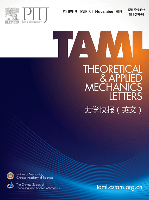
Theoretical and Applied Mechanics Letters
Exploring Cutting-Edge Solutions in Engineering DisciplinesTheoretical and Applied Mechanics Letters, published by ELSEVIER, stands as a premier journal in the field of engineering and applied mechanics, recognized for its rigorous peer-reviewed articles that advance theoretical and practical frameworks. With an impressive open access policy established in 2015, the journal enhances global accessibility to cutting-edge research across a range of disciplines including Aerospace, Civil, Mechanical, and Biomedical Engineering, along with Computational Mechanics and Ocean Engineering. The journal boasts an enviable position in the academic landscape, achieving a Q1 rank in several categories as of 2023, while being cited among the top percentiles in Scopus Ranks, specifically ranking #25 in Aerospace Engineering and #15 in Computational Mechanics. The journal aims to foster innovation by providing a platform for scholars and professionals to disseminate their findings, thereby bridging the gap between theoretical research and practical applications. By promoting a diverse range of topics and methodologies, Theoretical and Applied Mechanics Letters not only contributes to the advancement of engineering disciplines but also supports the global academic community in exploring sustainable and impactful engineering solutions.

Journal of Computational Applied Mechanics
Unlocking Insights in Computational Applied MechanicsJournal of Computational Applied Mechanics, published by UNIV TEHRAN, DANISHGAH-I TIHRAN, is an influential open-access journal that has been disseminating significant research findings since its inception in 2012. With a dedicated focus on the fields of Computational Mechanics, Mechanical Engineering, and Mechanics of Materials, this journal has garnered a Q3 ranking in multiple relevant categories as of 2023, indicating its burgeoning impact within the academic community. Although precise HIndex scores are currently unavailable, the journal's recognition is underscored by its Scopus rankings, placing it in the middle tier among its peers. The journal invites researchers, professionals, and students to contribute to and engage with the continually evolving discourse in applied mechanics, fostering innovation through the dissemination of quality research. As an open-access journal, it ensures that findings are readily accessible to a global audience, thereby enhancing collaboration and knowledge sharing in the scientific community.

International Journal of Rotating Machinery
Connecting Engineers with Cutting-edge ResearchThe International Journal of Rotating Machinery, published by Hindawi Ltd, is a prominent open-access journal dedicated to advancing research and innovation in the fields of Mechanical Engineering and Industrial and Manufacturing Engineering. Since its inception in 1994, the journal has been committed to disseminating high-quality research articles that explore the mechanics, performance, and design of rotating machinery, which are critical in various industrial applications. The journal has established itself within the academic community, earning a Q3 category ranking in both its specialized fields as of 2023. With a robust history spanning converged years from 1994 to 2024, and an active presence in major indexing databases, it serves as an essential resource for researchers, practitioners, and students keen to stay at the forefront of engineering advancements. Notably, the journal's open access policy ensures that all articles are freely available, fostering greater collaboration and sharing of knowledge within the global engineering community.

PROCEEDINGS OF THE INSTITUTION OF MECHANICAL ENGINEERS PART C-JOURNAL OF MECHANICAL ENGINEERING SCIENCE
Empowering the engineering community with pivotal research findings.PROCEEDINGS OF THE INSTITUTION OF MECHANICAL ENGINEERS PART C - JOURNAL OF MECHANICAL ENGINEERING SCIENCE, published by SAGE Publications Ltd, stands as a pivotal resource in the field of mechanical engineering, encompassing a wide array of topics from advanced materials to fluid dynamics and system design. With an impact factor reflective of its esteemed reputation, as indicated by its Q2 ranking in the Mechanical Engineering category, this journal serves as a vital forum for researchers, practitioners, and students alike. The journal boasts a rich history, converging research from 1983 to 2024, showcasing innovations and advancements that shape the mechanical engineering landscape. Although it is not an open-access publication, the insights and studies published herein provide invaluable contributions to the engineering community, fostering knowledge exchange and collaborative advancements. Researchers seeking a platform for their pioneering work will find Part C an ideal venue to disseminate their findings and engage with peers in this dynamic field.
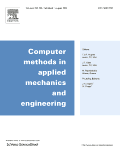
COMPUTER METHODS IN APPLIED MECHANICS AND ENGINEERING
Elevating Knowledge in Computational Methods and Mechanical Engineering.COMPUTER METHODS IN APPLIED MECHANICS AND ENGINEERING, published by Elsevier Science SA, is a premier journal that has significantly contributed to the fields of computational mechanics, computer science applications, mechanical engineering, and the mechanics of materials since its inception in 1972. With an ISSN of 0045-7825 and an E-ISSN of 1879-2138, this journal is recognized for its rigorous peer-review process and is consistently ranked in the Q1 quartile across multiple categories, including Computational Mechanics and Mechanical Engineering. Its impressive Scopus rankings place it in the top tiers of its field, with a percentile ranking of 98th in Computational Mechanics. Researchers, professionals, and students will find the journal's comprehensive scope and high-quality articles invaluable for advancing their knowledge and practices at the intersection of engineering and computation. Although not an open-access journal, its impactful contributions to both theoretical and applied research make it an essential resource for anyone involved in these dynamic fields.

JOURNAL OF ENGINEERING MECHANICS
Connecting Theory and Practice in Engineering MechanicsJOURNAL OF ENGINEERING MECHANICS, published by the ASCE - American Society of Civil Engineers, stands as a premier interdisciplinary journal in the field of engineering mechanics. With an impact factor reflecting its vital contributions—placing it in the Q1 category for both Mechanical Engineering and Mechanics of Materials—this journal has established itself as a critical resource for researchers and professionals alike. Since its inception in 1981 and continuing through 2024, it has provided a platform for the dissemination of high-quality research, emphasizing innovative methodologies and cutting-edge findings. The journal's ranking in Scopus further underscores its significance, with impressive standings in the 79th and 77th percentiles of its respective categories. As a vital resource for students and professionals aiming to stay abreast of developments in engineering mechanics, it remains committed to fostering rigorous scientific exploration and practical applications within the field.
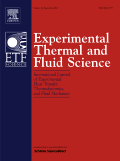
EXPERIMENTAL THERMAL AND FLUID SCIENCE
Innovating the future of engineering through experimental research.EXPERIMENTAL THERMAL AND FLUID SCIENCE is a prestigious academic journal published by Elsevier Science Inc, dedicated to advancing the fields of thermal and fluid sciences. With a strong focus on innovative experimental research, it plays a crucial role in disseminating new knowledge and techniques across multiple domains, including Aerospace Engineering, Chemical Engineering, Fluid Flow and Transfer Processes, Mechanical Engineering, and Nuclear Engineering. Holding a notable impact factor and ranking in the Q1 quartile across these categories since 2023, the journal is recognized for its high-quality contributions, which appeal to a diverse audience of researchers, industry professionals, and students alike. Additionally, with dedicated coverage from its inception in 1988 to projections extending through 2025, EXPERIMENTAL THERMAL AND FLUID SCIENCE provides a vital platform for sharing advancements in experimental techniques and findings that shape the future of engineering and applied sciences.
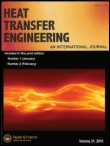
HEAT TRANSFER ENGINEERING
Transforming concepts into cutting-edge thermal applications.HEAT TRANSFER ENGINEERING is a leading international journal published by Taylor & Francis Inc, dedicated to advancing the field of heat transfer and thermal engineering. With a strong focus on the key aspects of Condensed Matter Physics, Fluid Flow and Transfer Processes, and Mechanical Engineering, this journal covers a comprehensive range of topics from experimental studies to theoretical analysis, aiming to foster innovative research and practical applications. Since its inception in 1979 and continuing through 2024, the journal has established itself as an essential resource for researchers and industry professionals alike, reflected in its solid rankings within Scopus—holding a Q2 quartile classification in multiple engineering disciplines. Although not open access, the journal ensures broad accessibility through institutional subscriptions, making cutting-edge research readily available. With its rigorous peer-review process and commitment to quality, HEAT TRANSFER ENGINEERING plays a crucial role in shaping the future of thermal management solutions and engineering practices.

MECCANICA
Connecting Ideas in Condensed Matter and MechanicsMECCANICA, an esteemed journal published by Springer, stands at the forefront of research in the fields of Condensed Matter Physics, Mechanical Engineering, and Mechanics of Materials. Established in 1966 and continuing through 2024, this journal provides a robust platform for the dissemination of innovative research and advancements in these increasingly interconnected domains. With an impressive 2023 ranking placing it in the Q2 category across multiple fields, MECCANICA boasts a Scopus rank of #198 in Mechanical Engineering, #150 in Condensed Matter Physics, and #141 in Mechanics of Materials, highlighting its significance and influence within the scholarly community. The journal aims to foster dialogue among researchers, professionals, and students, facilitating the exchange of cutting-edge ideas and methodologies crucial for overcoming contemporary engineering and physics challenges. Readers can access a wealth of knowledge through its comprehensive articles, and while it does not currently offer open access, the journal remains instrumental in shaping the future of engineering and physical sciences.
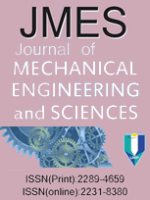
Journal of Mechanical Engineering and Sciences
Connecting Global Minds in Mechanical Engineering ResearchThe Journal of Mechanical Engineering and Sciences (ISSN: 2289-4659, E-ISSN: 2231-8380), published by UNIV MALAYSIA PAHANG, is a prominent open access journal established in 2011, dedicated to advancing the field of mechanical engineering and associated sciences. Covering a wide array of topics from industrial manufacturing processes to computational mechanics, the journal serves as a vital platform for researchers, professionals, and students to disseminate innovative findings and methodologies. With impressive Scopus rankings, including a place in the 60th percentile for Industrial and Manufacturing Engineering, the journal holds a significant position among its peers, facilitating global academic discourse. Located in Kuantan, Pahang, Malaysia, the journal emphasizes accessibility and collaboration within the engineering community, encouraging submissions that contribute to both theoretical and applied aspects of mechanical engineering.